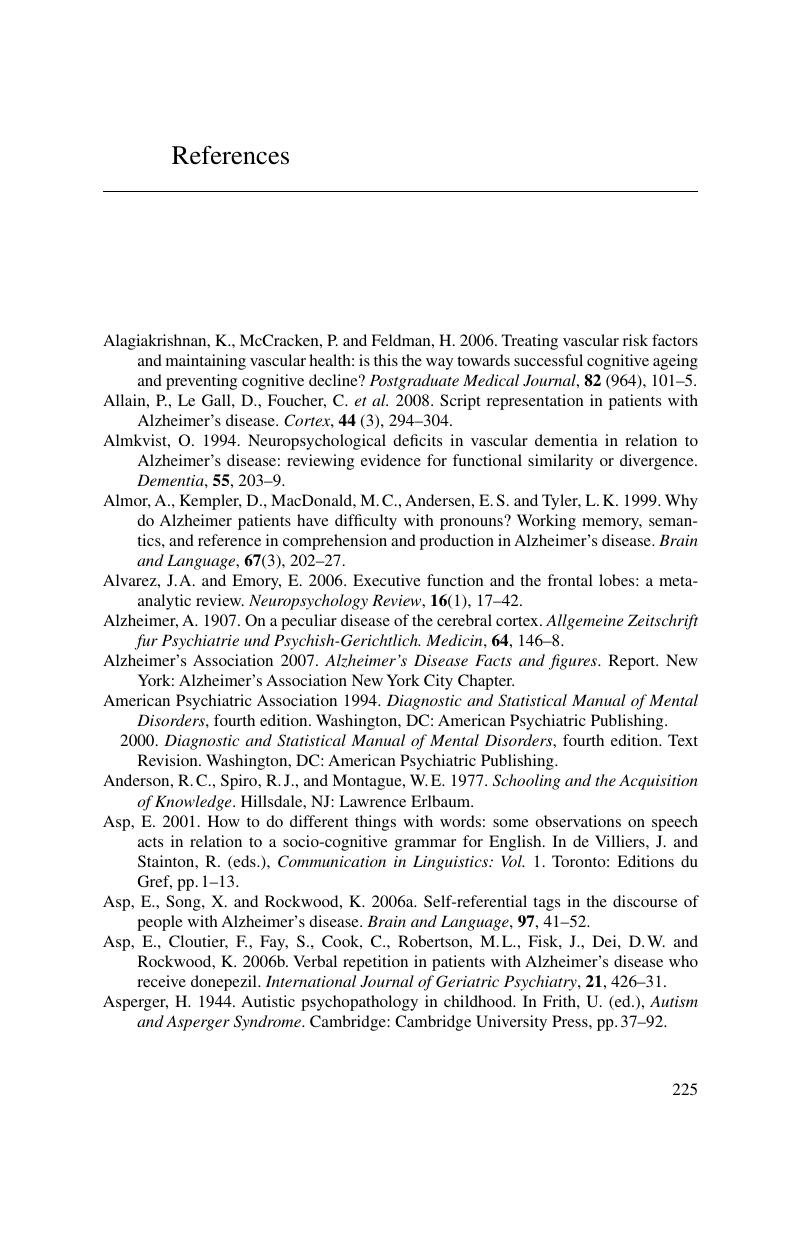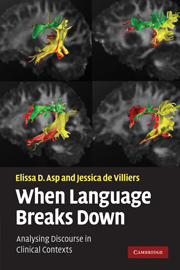Book contents
- Frontmatter
- Contents
- List of figures
- List of tables
- Acknowledgements
- Transcription conventions
- Introduction
- 1 Introduction to clinical discourse analysis
- 2 Theoretical and clinical contexts
- 3 Talk and speech – conversation analysis and intonation in English
- 4 Grammar
- 5 Phase and contexts of culture and situation
- 6 Study design
- 7 Differential diagnosis and monitoring
- 8 Cognitive models, inferencing and affect
- 9 Modelling information across domains
- Closing remarks
- Notes
- Appendix A Some basic grammatical terminology and relations
- Appendix B Inventory of codes
- References
- Author index
- Subject index
- References
References
Published online by Cambridge University Press: 05 June 2012
- Frontmatter
- Contents
- List of figures
- List of tables
- Acknowledgements
- Transcription conventions
- Introduction
- 1 Introduction to clinical discourse analysis
- 2 Theoretical and clinical contexts
- 3 Talk and speech – conversation analysis and intonation in English
- 4 Grammar
- 5 Phase and contexts of culture and situation
- 6 Study design
- 7 Differential diagnosis and monitoring
- 8 Cognitive models, inferencing and affect
- 9 Modelling information across domains
- Closing remarks
- Notes
- Appendix A Some basic grammatical terminology and relations
- Appendix B Inventory of codes
- References
- Author index
- Subject index
- References
Summary

- Type
- Chapter
- Information
- When Language Breaks DownAnalysing Discourse in Clinical Contexts, pp. 225 - 248Publisher: Cambridge University PressPrint publication year: 2010



